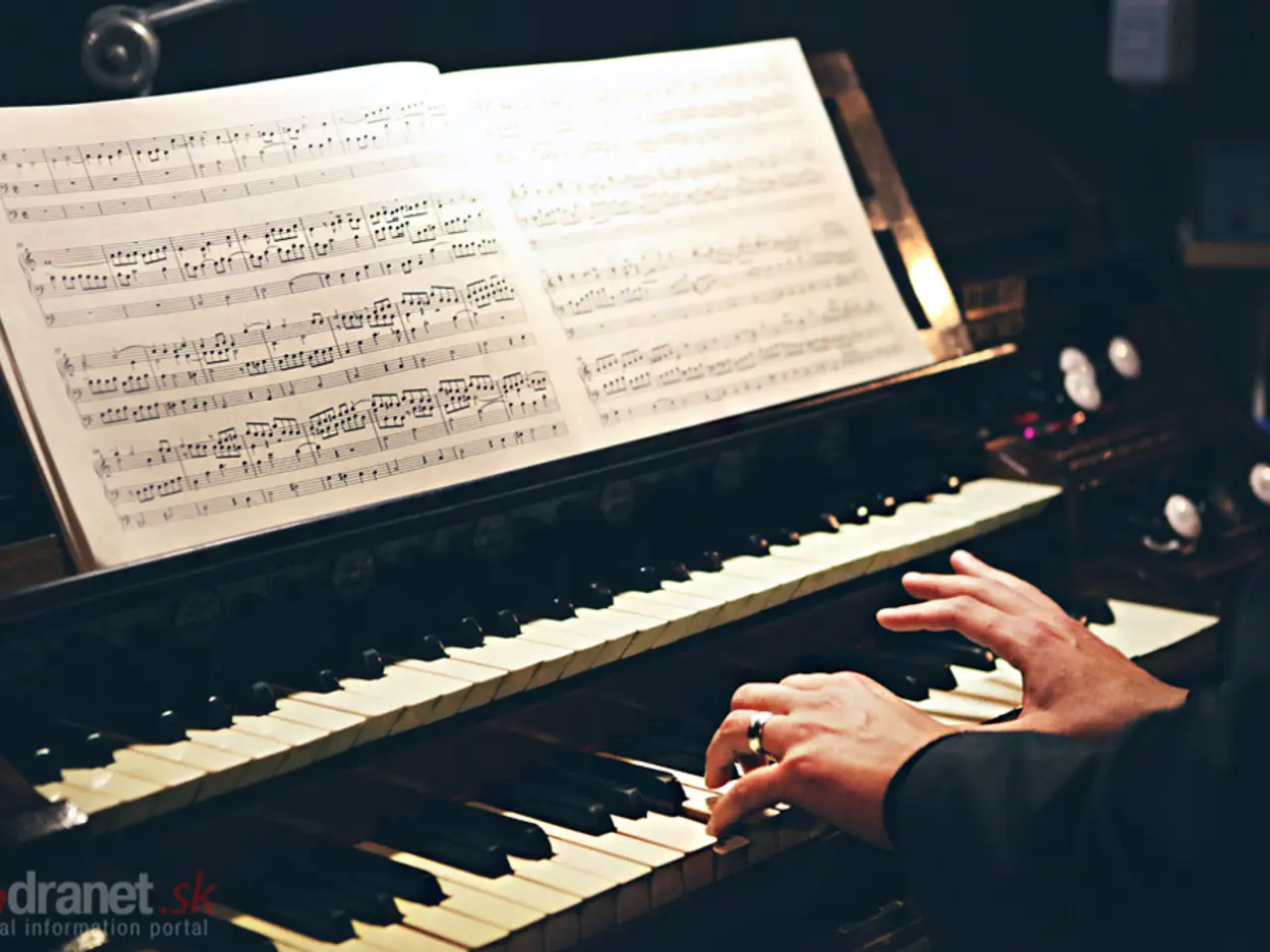Strategies for Honing Your Practical Skills and Quick Note Reading Abilities
Sight reading music on the piano can be a challenging yet rewarding skill to master. With practice and the right strategies, you can improve your speed, confidence, and accuracy in no time.
When encountering unfamiliar pieces, organization is key. Breaking down the music into small parts or phrases and practicing those individually, especially difficult spots, before linking them, is an effective approach. Prioritizing notes and rhythm is crucial, as accurate rhythm is as important as pitch for fluent sight reading. Counting aloud or internally can help keep timing consistent.
Before starting to sight read, it's beneficial to check the key signature. Learning various keys is advantageous for sight reading, as it allows for educated guesses about patterns. For pianists, wrist technique relies on knowing the rhythm first.
Starting slow with accuracy is essential. Practice sight reading pieces at a slow tempo or reduced speed, prioritizing correct notes and rhythm before increasing speed. Using a metronome to keep steady timing can be helpful.
Learning and solidifying music fundamentals is also crucial. Be confident in reading notes, rhythms, key signatures, and time signatures to reduce hesitation when sight reading.
Regular, structured practice using diverse, progressively challenging materials is key. Consistent daily sight reading with a wide variety of pieces helps develop pattern recognition and fluency. Tools like MuseFlow and Sight Reading Studio can make practice engaging and effective, offering constantly changing challenges at adjustable tempos and generating unlimited customized exercises with immediate feedback.
Hands separate then together is another strategy to consider. Practice hands separately at first, then combine once confident, especially for more complex pieces. Structured courses designed for beginners can scaffold learning, combining scales, chords, and simple repertoire to build skills step-by-step.
In conclusion, to effectively practice and improve piano sight reading skills, focus on mastering basic music reading, starting slow with accuracy, and gradually increasing complexity and speed while maintaining steady rhythm. Applying these principles will increase your speed, confidence, and accuracy in sight reading piano music.








